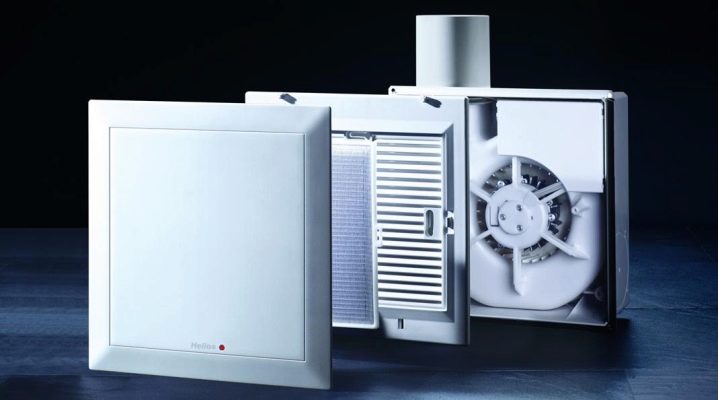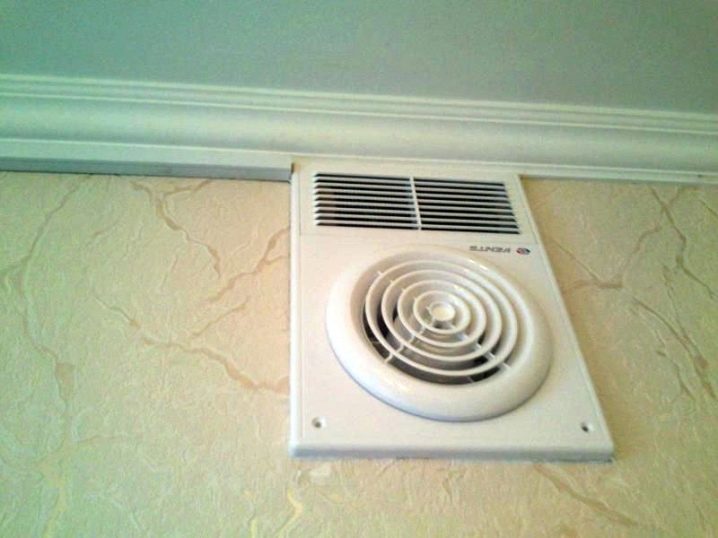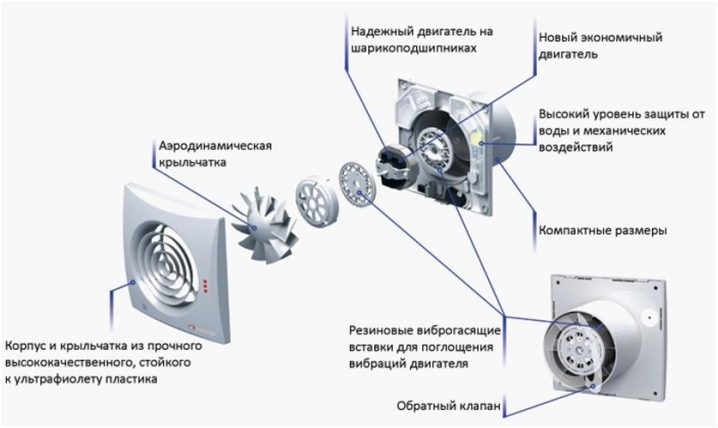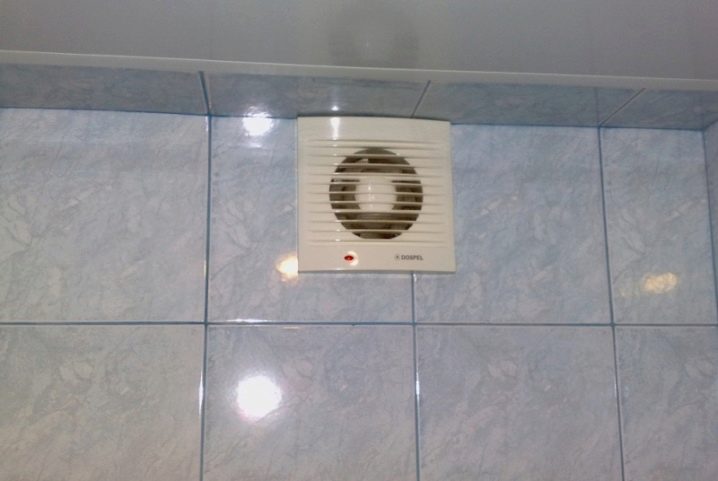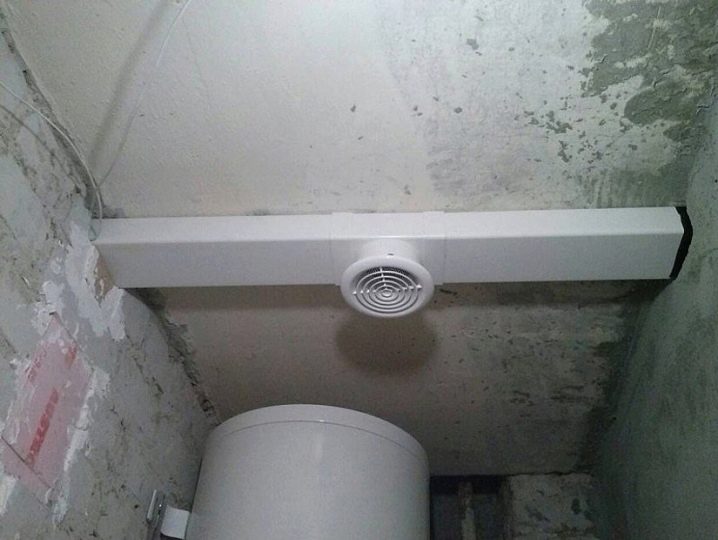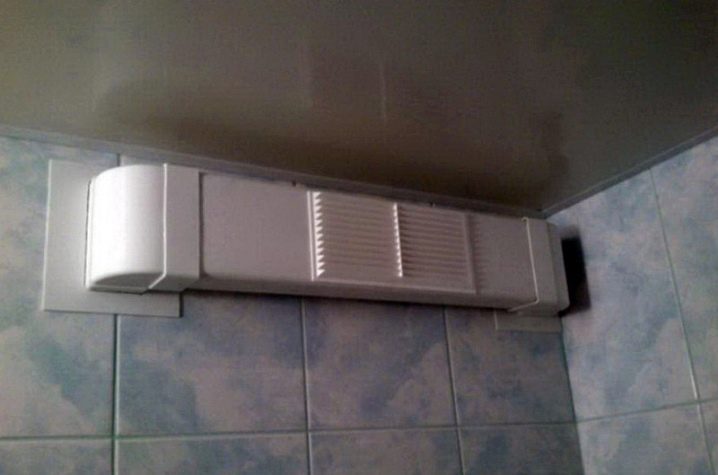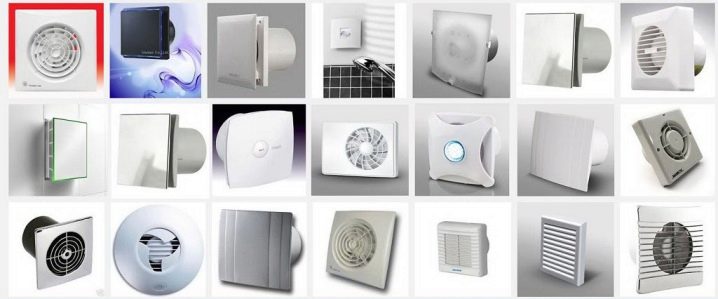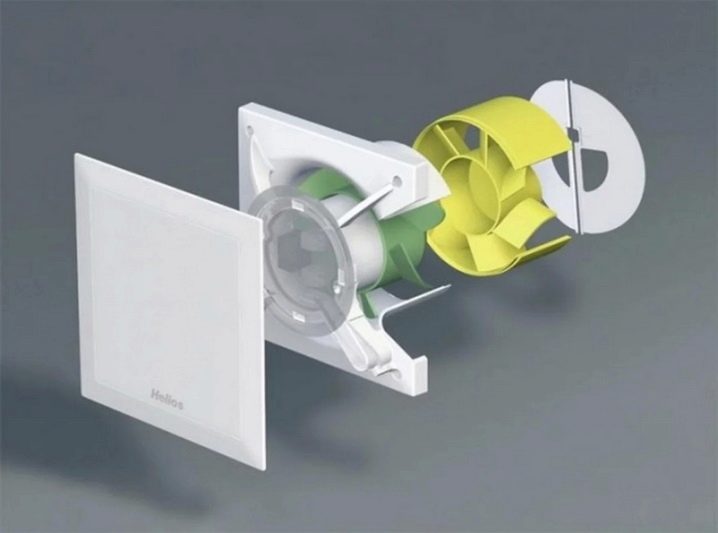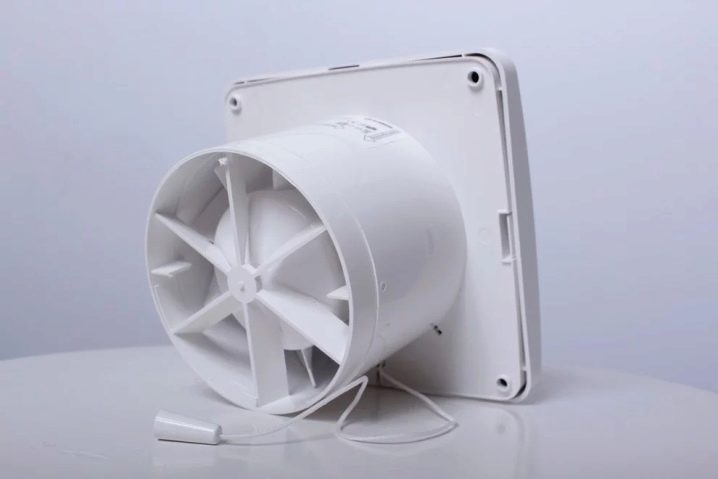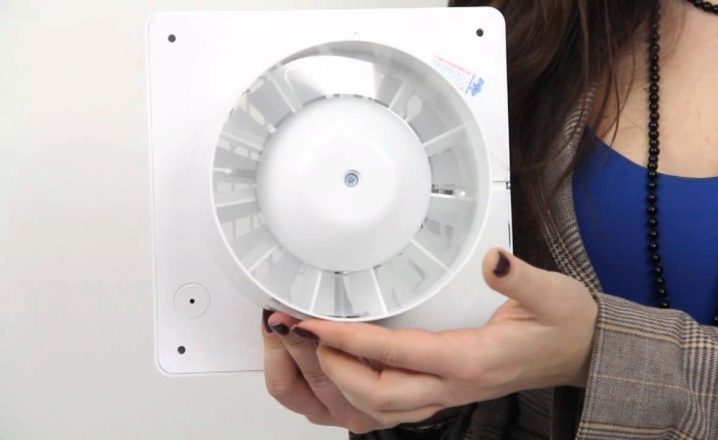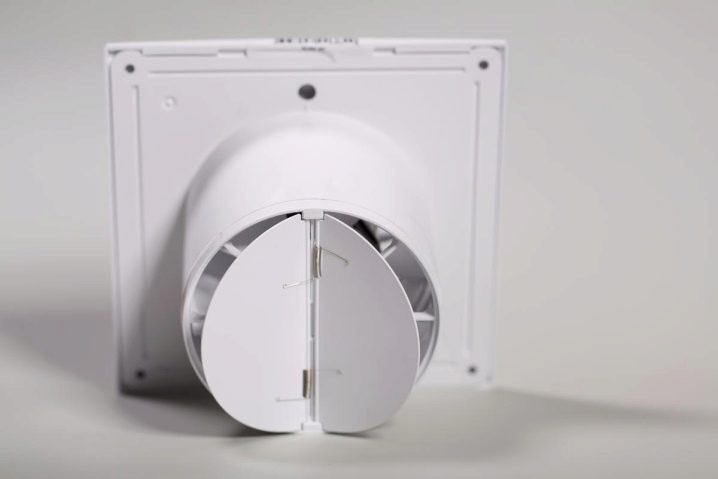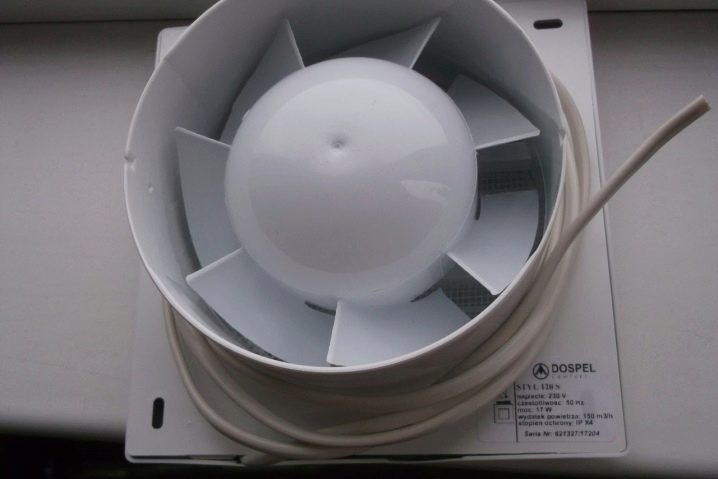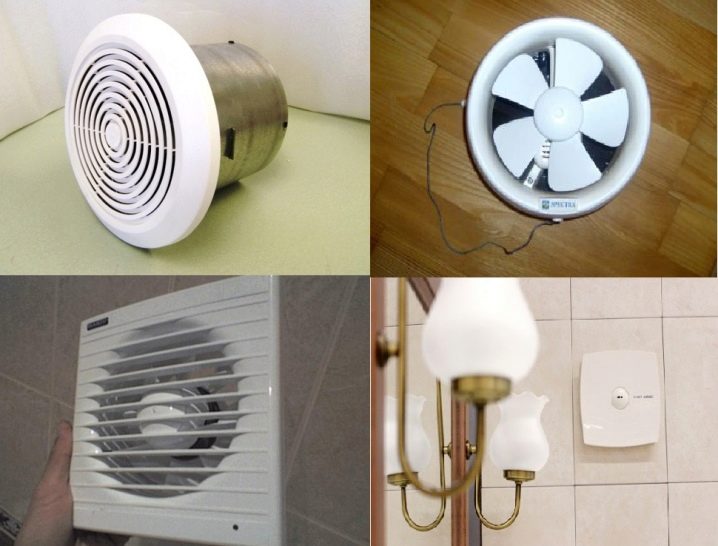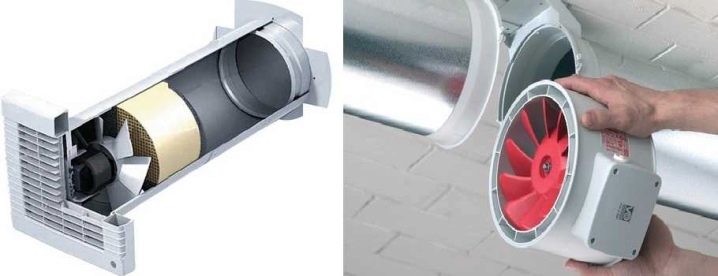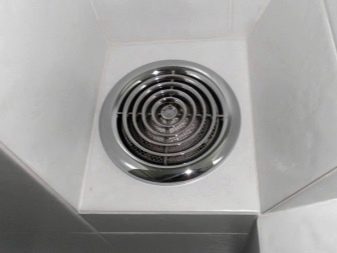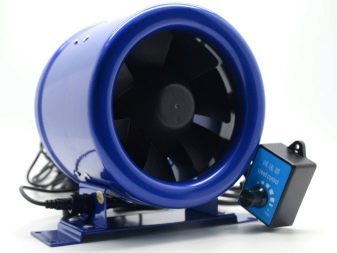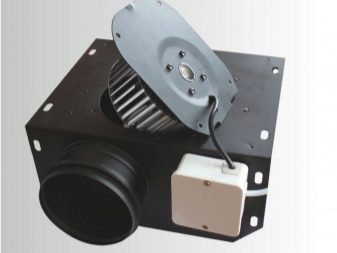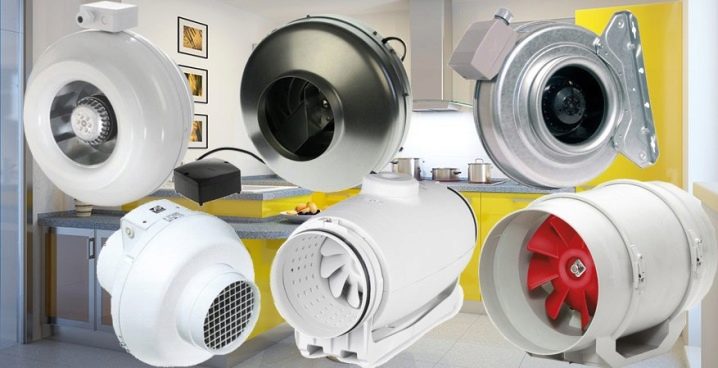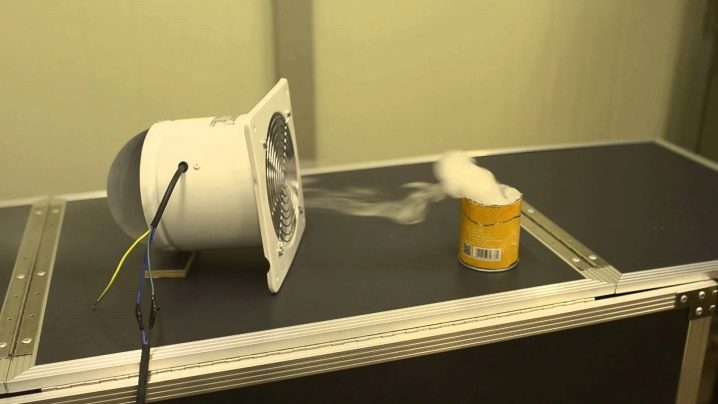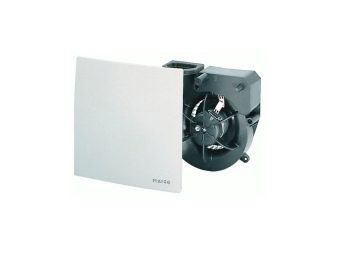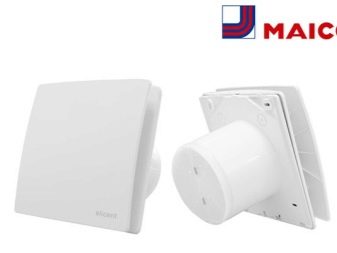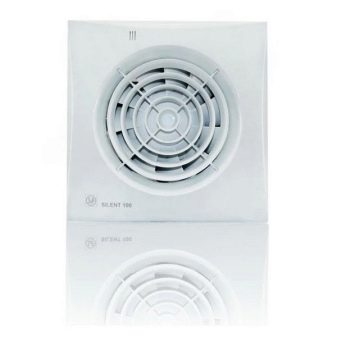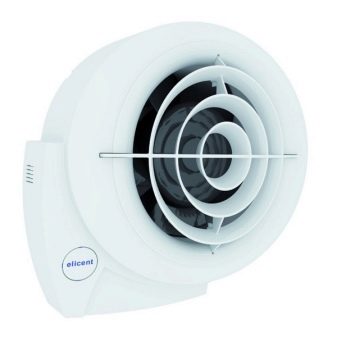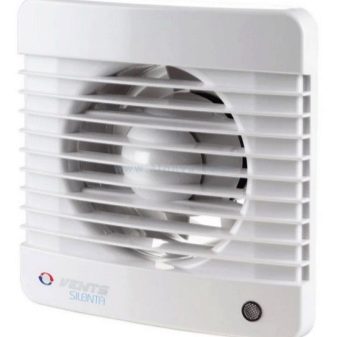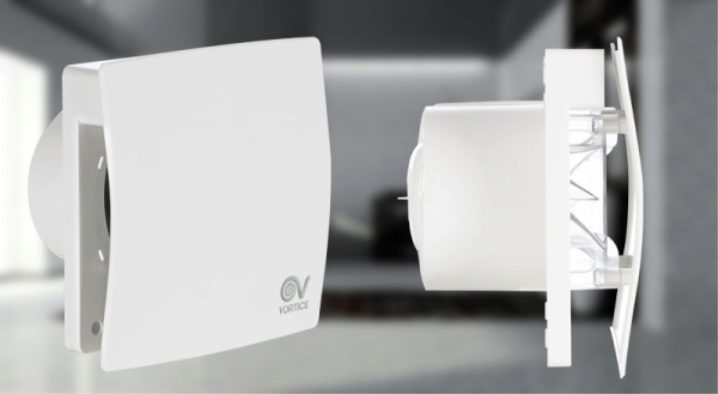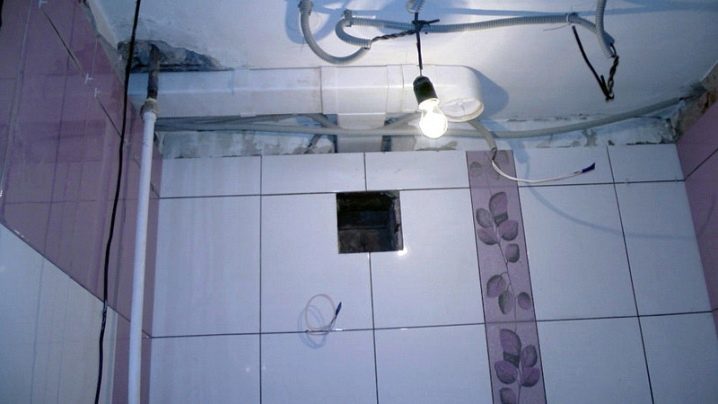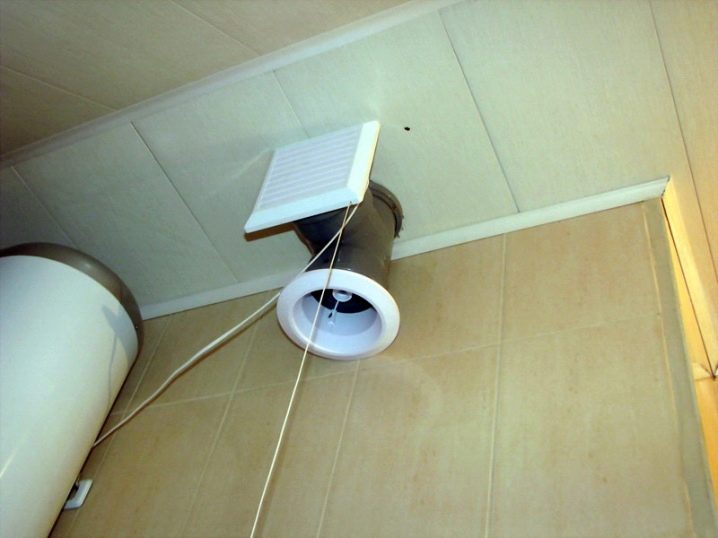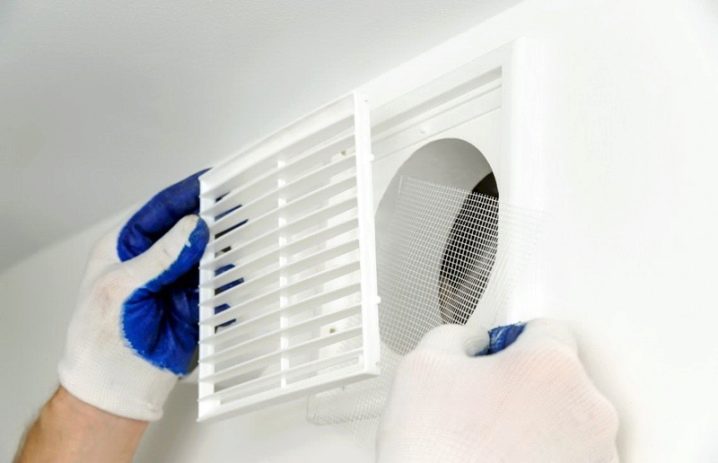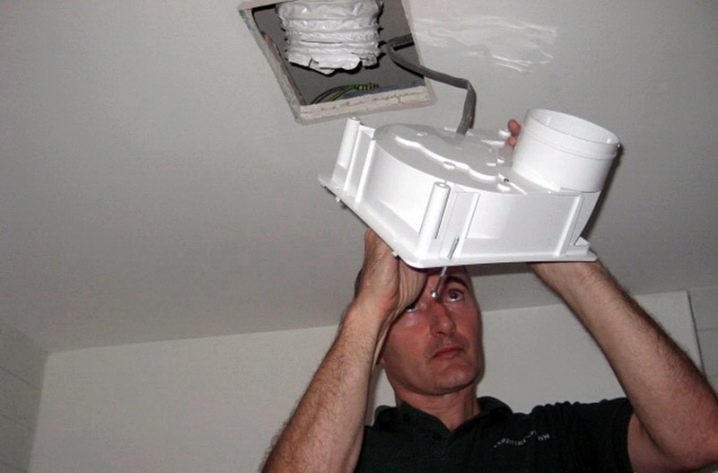Silent exhaust fans: features, types and installation
Prompt removal of polluted air is necessary in many areas of industrial activity, as well as in everyday life. For the forced removal of air masses using fans of various types.
Device and principle of operation
Extraneous noise, which produces any ventilation device, is inevitable, and is a significant drawback.
If its level is too high, it can lead to:
- diseases of the cardiovascular and nervous system;
- chronic fatigue and insomnia;
- many other ailments.
The minimum values at which the silent fan runs is 34 dB. In everyday life with such a “noise” a person whispers. There are domestic fans that produce a noise of only a couple of tens of decibels, which corresponds to a barely audible whisper. At a distance of one and a half meters, the functioning of such a device is almost indistinguishable.Such fans, as a rule, consist of nodes that have their own characteristics.
Any fan is made of three blocks:
- electric engine;
- housing;
- bearings.
Silent fans are equipped with exactly the same engines as ordinary devices. It is very important to use the principles of reliable fixation. If a working engine is securely attached, then there are no extraneous vibrations that create a noise “clearance” during operation. Also the vibration is transmitted by the body of the mechanism. The walls most often are of small thickness, made of plastic (or thin metal), which, vibrating, generates sound waves of a certain frequency.
It should be remembered that some sound waves can generate a bearing. If the lubricant is old or of poor quality, then the sound of a working engine will certainly be higher than generally accepted standards. Silent fans are different from the traditional first of all the perfect fit of all elements, as well as their excellent quality. After assembly, the manufacturer tests the fan several times, if there are any flaws, then the product is surely “brought to mind”.
Another source of noise may occur if the centering of the unit is not adjusted correctly. The work of the fan, which is located in the channel, can be made noticeably quieter if the channel itself is sheathed with PVC plates, and a special “jammer” is placed behind the fan.
Species
Fans that can be found at home differentiated into the following types:
- channel;
- axial;
- radial;
- invoices.
The first type is placed at the very beginning of the air ducts; gaskets made of rubber or plastic do not attach to these devices, so they often create extraneous noise, but they are distinguished by high performance.
Axial fans direct the air flow along the same vector where the engine rotor moves. In the case, the noise is reduced by almost 85%, however, the sound is still present. The body shape is cylindrical. The air mass goes along the body of the device, at the entrance a special element is often mounted, which significantly improves the aerodynamic characteristics of the fan. Fans of this type are among the most productive (process more than a hundred cubes of air per hour).Also, these models are very easy to install and reliable in operation. Unfortunately, most products have high levels of noise - from 32 to 50 decibels.
Radial fans are designed to reduce noise in industrial plants. In everyday life, such devices are almost never used. For each ventilation channel, a separate device is installed, which creates a general sound background of a low level. Radial fans have a spiral housing, it has a special wheel with blades. During the rotation of the wheel, the air masses actively move along the body under the influence of centrifugal force. There are several types of radial fans, in each of which the blades can be assembled backwards and forwards.
The first option is more economical, it is possible to save electricity by 20-25 percent, while the sound background becomes noticeably lower. If the blades are arranged forward, the performance of the fan increases significantly. These units are good because they are compact and easy to install in any duct. Overhead fans are most common in private households.Such units are present at the beginning of the ventilation duct, which makes installation and maintenance much easier.
There are fans with a check valve, they are also often used in various rooms. Rectangular units are placed in the ventilation ducts, usually they can be observed in catering establishments or in industrial plants. There are also square fans, they are a variety of rectangular models.
In recent years, centrifugal fans have become increasingly popular. They are good to install in rooms that have a small area, from 17 square meters. m. They work with minimal noise design, and are quite productive. Such units can be mounted anywhere on the duct. There are also specialized fans that are responsible for the removal of combustible mixtures. Most often they can be found in the relevant factories and plants, in the living conditions they are also operated. They are often put in the kitchens.
How to choose?
The performance of the fan is calculated using a simple formula: the volume in cubic meters of air is multiplied with the ratio of air exchange.Thus, the optimal parameter for three people corresponds to 6. For a bathroom, the number must be increased to 10. The normal noise level, which is considered universally acceptable, is 25 decibels.
Inside, the fan casing is often glued over with porous plastic or damper rubber gaskets, which effectively absorb sound waves.
For channel devices, protection against a large number of dust streams that move through ducts is important. If there is no such protection, then after a while there will be a short circuit. Also, all fans must be protected from moisture or condensation.
The fan is able to operate in the room in operation mode, also in automatic mode. Additional applications are easy to set up, for example, turning on the device after the electric light comes on in the room. A special timer that fires at a certain time interval is very popular, and a powerful fan quickly aerates the room. It is important to note that when choosing a device for a hood or at home, it is best to buy a fan that has a percentage of 16 percent higher than the estimated one.
In recent years, models are increasingly supplied with special integrated control systems. For example, sensors that record the humidity of the air in the room, and meet the immediate needs of both business centers and private households. Often, such devices are needed in medical and kindergartens. Before choosing the right model, you should understand where the fan will be. For example, in the bathroom, the device should be mounted in the area of the ceiling, where there is the most saturated with moisture air.
There are standard rules that are recommended to know:
- wiring is arranged in a separate box;
- it is more expedient to install the fan during general repair work;
- for the bathroom, the inclusion of a fan and electricity is often combined;
- fan noise can be reduced if it is placed in a rigidly fixed PVC tube, which is fixed with cement mortar or sealant;
- in the toilet it is better to place the device above the toilet.
When choosing a fan, it is important to pay attention to the degree of safety of the device.
First of all, the fan must be reliably isolated from moisture and dust.This is especially important for a product that is placed in a bathroom or bathroom. If the unit is poorly insulated, a short circuit is inevitable, which can cause a fire. It is also possible to positively solve the problem if you buy small fans that run from a 24 volt source. The hood must be efficient and functional. Increasingly, you can find small fans that work when turning on the light and can effectively process large masses of air in a short time. Also, such products are supplied with a timer, which turns off the unit after a certain period of time.
It is best to put a fan with a check valve in the kitchen, it protects against the penetration of foreign smells from neighbors into the room. For the kitchen are also relevant devices that operate from the control panel. Such fans are recommended to be mounted closer to the ceiling.
Manufacturers
Maico - It is a company that has its headquarters in Germany, and is known throughout the world. The technique she creates is distinguished by simplicity and high quality. Today there are more than one and a half thousand items of climatic equipment for a variety of purposes.
Soler & palau - Italian company that specializes in the production of silent fans. Promptly introduces the latest innovative developments. Products have one of the best characteristics among low-noise ventilation devices. The best model of Soler & Palau is SILENT-100, it is designed to handle 98 cubic meters of space, power is 8.1 watts. Noise reduced to a minimum threshold - 25 decibels.
Elicent Company represents the interests of Maico in the Apennine Peninsula, is revealed by a subsidiary. The simplicity of product designs, reliability and low price - these are the parameters that distinguish the technology of this manufacturer. The company is able to compete adequately on an equal footing with the most eminent global brands. Vents is a Russian company that has been operating in the local market for a quarter of a century. He has a lot of independent know-how of technologies that will allow him to be the winner of the toughest competitive fights with honor.
Vortice - Another Italian company that has focused on the reliability and safety of equipment. It is also distinguished by the original design of many products.
The cost of the product depends on many factors:
- size;
- power;
- case material.
In steel cases, fans are more expensive, but modern plastic in our time is not inferior to hardened steel, and is just as durable. The minimum price of a miniature unit for a bathroom is a thousand rubles. More complex products with many functions can cost 5 and 15 thousand rubles.
Installation
The most common installation of ventilation in the home is the installation of ventilation in the bathroom and bathroom, as well as in the kitchen and in the living room. Typically, the device is placed at the beginning of the duct, which allows to achieve the highest efficiency.
There can be only two sources of noise: from a working device or from a strong stream of incoming air. It is recommended to make the duct or round or square. Then the side area will be maximum, the noise level will be noticeably lower. In the flat air ducts the central part functions, it accounts for the main load, these devices generate more noise.
Before installing ventilation, you should roll out the scheme of exhaust ventilation. The air intake is equipped with a cooler, as well as special filters that can be placed behind the device.The outlet duct, which takes in air from outside, is placed in the floor area. The air duct, which is responsible for removing the exhaust air, is mounted closer to the ceiling.
Two holes are made in the wall in which air ducts will be mounted. It should also stock up on wall grids. They are equipped with special plugs-valves to protect the equipment from mechanical particles and dust.
The device is mounted at the selected point. Ventilation channels, which can be made of aluminum or plastic, are installed (most often behind suspended ceiling panels).
Air ducts are pulled through all the rooms, they are attached to the bearing walls, the concrete slab of the ceiling. Often, a recuperator (mixer) is also mounted, it can be very useful. You can make it yourself or buy in the store.
The fan is lined with insulation, technical cotton wool is well suited for this, it is inexpensive and can significantly reduce the noise background. At the entrance to the box, you can also lay the technical cotton wool, it will significantly reduce vibrational vibrations. All joints in the joints are blown with foam.The work is simple, you can save a considerable amount of money by making it yourself.
For information on how to install exhaust fan in the bathroom with your own hands, see the following video.
